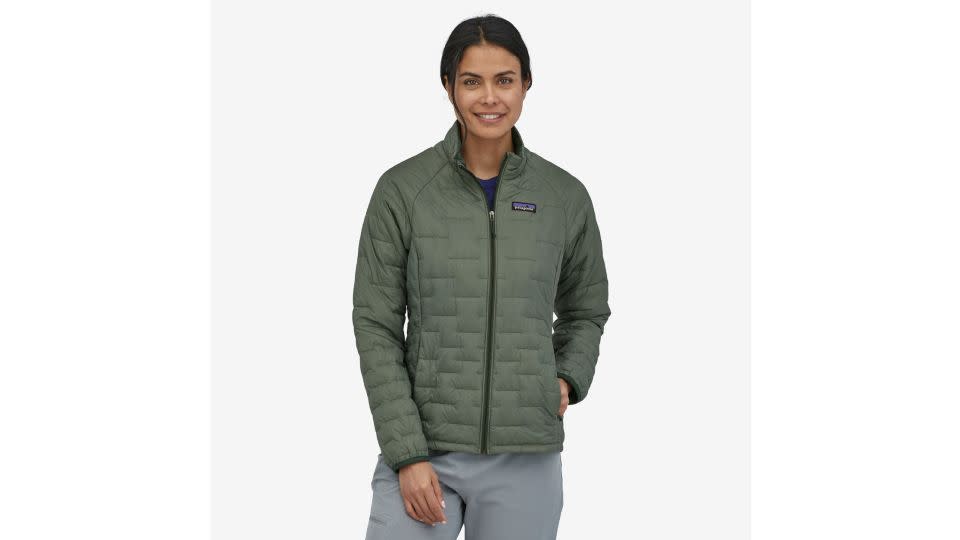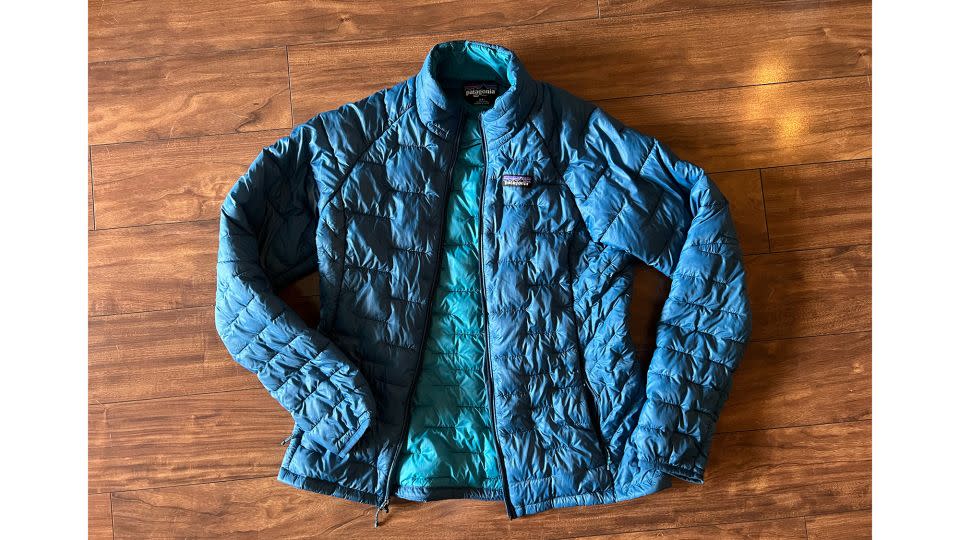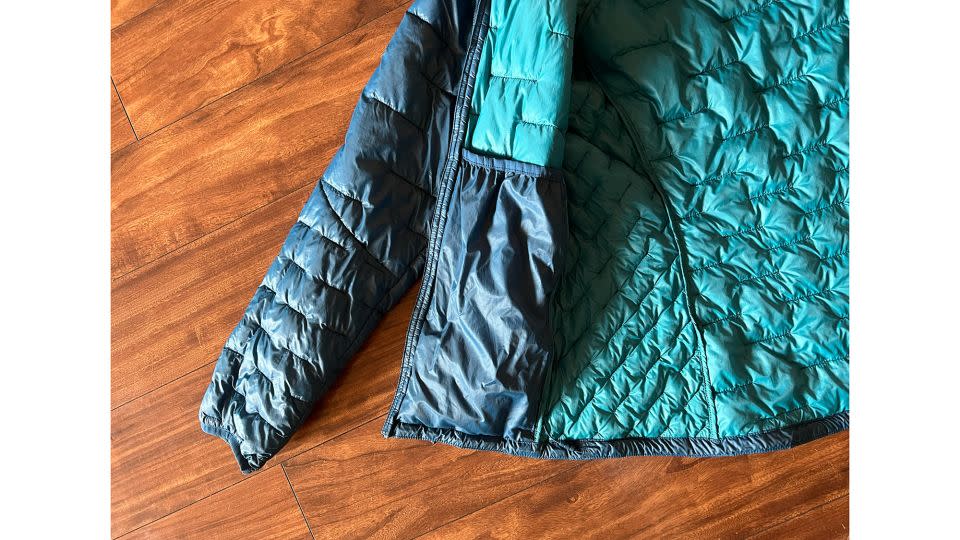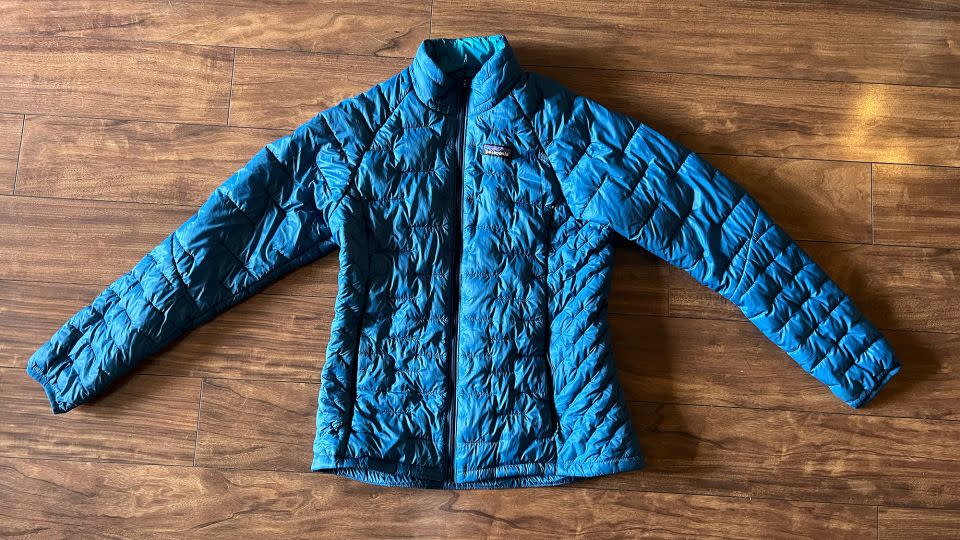Patagonia Micro Puff Jacket review: Warm, packable and ultra light
Content is created by CNN Underscored’s team of editors who work independently from the CNN newsroom. When you buy through links on our site, CNN and its syndication partners may earn a commission. Learn more

The first snow has already fallen near my hometown in the Rocky Mountain foothills, which can mean only one thing: Winter is officially creeping its way forward, and with it, the advent of puffy season. Thankfully, today’s puffies are a heck of a lot more functional and formfitting than the marshmallow-style parkas I was forced to don as a youth. After testing several of this season’s top insulated coats from big outdoor brands, there’s one that’s a clear standout above the rest: Patagonia’s Micro Puff Jacket.
While it may not be the warmest or most gram-counting ultra-light puffy you can find, Patagonia has done a fantastic job of creating a solid all-around synthetic jacket that hits high marks in sustainability, weight, warmth, water resistance and packability. If you’re in the market for a non-down puffer, this is the one to get.
For two months, I’ve worn this thing on frigid morning dog walks around Boulder, on hikes in the Rocky Mountains and around the Kenyan campfire on an African safari with Abercrombie & Kent. Below, I’ll get into what makes it stand out against the other jackets in my (admittedly large) gear closet.
Patagonia Women's Micro Puff Jacket

With an impressive warmth-to-weight ratio and stellar sustainability track record, Patagonia’s Micro Puff Jacket is far and away the jacket to pick if you’re looking for an eco-friendly alternative to the down puffy that’s toasty and packable for winter.
Patagonia Men's Micro Puff Jacket

The men's version of this jacket is available in four colors and sizes XS to 3XL.
What we liked about it
There’s a reason this jacket hits high marks on all of the top gear review websites — it’s super warm, ultra light and made with 100% postconsumer recycled materials. Plus, it packs down small, making it ideal for travel and backpacking.
The warmth-to-weight ratio
Patagonia claims that the Micro Puff boasts the brand’s highest warmth-to-weight ratio ever, meaning that, ounce for ounce, this is the toastiest jacket in its lineup, even when compared to expensive and less water-resistant down alternatives. On my chilly evening strolls and windy mountain hikes (not to mention the 30-mile-per-hour winds whipping around in the back of my Maasai Mara Jeep), this stat seems to hold up.

The Micro Puff’s brick-style baffles are designed to trap heat (without making you look like the Michelin Man) and keep the jacket’s interior insulation evenly distributed so that it doesn’t bunch up after several washes. So far, the jacket seems similarly warm to my Patagonia Down Sweater, though it’s lighter (at just 8.9 ounces) and slimmer. It easily fended off the 30-mile-per-hour-plus winds I encountered on my Kenyan safari, and it’s often been too warm with a simple cotton T-shirt underneath while walking with my dog in temperatures in the high 40s — pretty impressive.
Made with recycled materials
It’s no secret that Patagonia is an industry leader when it comes to sustainability, and the Micro Puff Jacket is just one of the brand’s many earth-friendly, Fair Trade Certified designs. This insulated puffy is stuffed with PlumaFill insulation, which is made with 100% recycled polyester and incredibly efficient at trapping heat where you need it most. Add to that the fact that this jacket boasts a wind- and water-resistant, 100% postconsumer recycled nylon ripstop, and you’ll quickly see why this synthetic puffer is one of the most sustainable you could possibly find in stores.
Its formfitting design
While perusing the hundreds of awesome online reviews for the Micro Puff, I noticed that many reviewers (both male and female) noted that the jacket tends to run small. However, I personally liked that the jacket provided a next-to-skin fit that wasn’t as bulky as a traditional down puffy — I could wear it around town and still feel surprisingly feminine. That being said, I would recommend sizing up if you plan to go backpacking or cold weather hiking and plan to layer a fleece or thicker mid layer under this baby. Want something with a hood for your noggin? No problem.

What we didn’t like about it
No piece of gear or apparel is flawless, and, in a perfect world, there are a few things we would change about the Patagonia Micro Puff Jacket.
It’s pricey
Well-made, sustainable outdoor clothing doesn’t often come cheap, and while there are certainly more expensive jackets on the market than the Micro Puff, this garment is still on the higher end of the price range for a puffy at $279. While we feel it’s worth it for a sustainable piece that will stand the test of time (it comes with Patagonia’s Iron Clad Guarantee, which states that you can return any of the brand’s items if you aren’t completely satisfied with them), there are definitely cheaper synthetic insulated coats out there.

Could be more breathable
Though this jacket is remarkably warm and wind-resistant for its tiny size and 8.9-ounce weight, it isn’t the best at breathability, especially if you’re intending to wear it on intense uphill pursuits in the cold. The baffles retain heat but don’t seem to shed it where it counts (like the underarms), and as such, the Micro Puff is best used as a belay jacket, a travel puffy or an evening jacket to wear around camp or on strolls through your favorite mountain town.
How it compares
As I mentioned earlier, the Micro Puff Jacket is neither the cheapest nor the most expensive insulated puffy out there. Also, though it’s quite lightweight, at 8.9 ounces, it’s certainly not the lightest in its class — that honor goes to Timmermade’s SUL .75 Down Sweater ($299), which is a featherlight 4 ounces for a men’s medium. Where the Micro Puff excels, though, is its Goldilocks-like ability to offer that “just right” blend of high warmth, low weight and great weather resistance.

If you’re looking for a durable, super-warm down puffy and don’t mind shelling out a little more cash, Arc’teryx’s Cerium ($400) is a worthy option, weighing in at just 10.2 ounces. Likewise, if you don’t mind traditional down stuffing and you’d like a lighter, similarly warm jacket to the Micro Puff, Mountain Hardwear’s award-winning Ghost Whisperer/2 ($325) is awesome and weighs a scant 7 ounces.
An excellent synthetic alternative that’s well vented for frigid uphill pursuits and big days out in the snow would be Arc’teryx’s Atom Hoody ($300), which isn’t quite as warm as the Micro Puff but offers well-placed fleece panels in between its insulation. Seeking a nonsynthetic down alternative? Look no further than the lightweight and packable Ibex Wool Aire Hoodie ($285).
Looking for a more affordable alternative that boasts great online reviews from fellow outdoors lovers? Both Rab’s Xenon 2.0 ($190 $105) — if you prefer synthetic to down — and Columbia’s Delta Ridge Down Jacket ($150) are fantastic alternatives.
Bottom line
If you’re in the market for an insulated jacket that’s super warm and supremely packable, all while keeping a low environmental footprint, look no further than Patagonia’s Micro Puff. At just under 9 ounces, it’s one of the lightest in its class, and it’s still brimming with great features like zippered pockets and a cinchable waist to lock in heat. Though we wish it were more breathable on uphill endeavors, we feel that its ultra-light design and great wind and water resistance make it a truly standout puffy jacket.
Note: The prices above reflect the retailers' listed price at the time of publication.
For more CNN news and newsletters create an account at CNN.com

